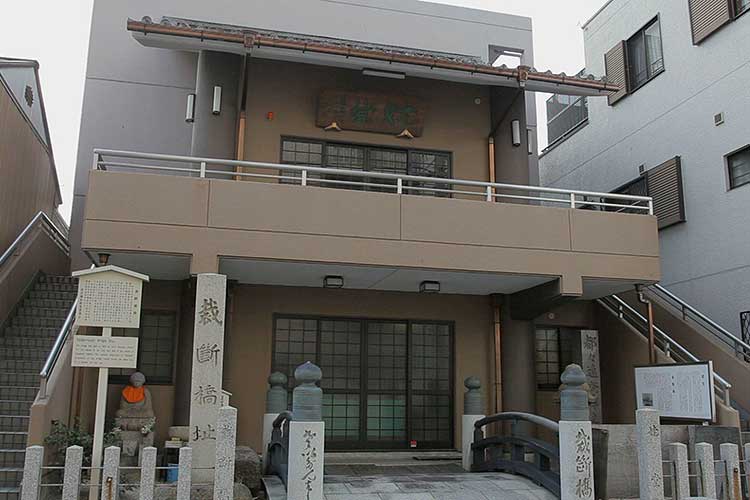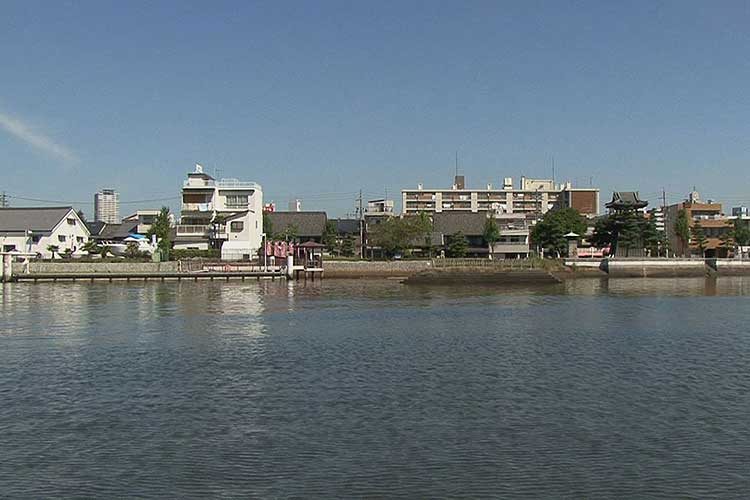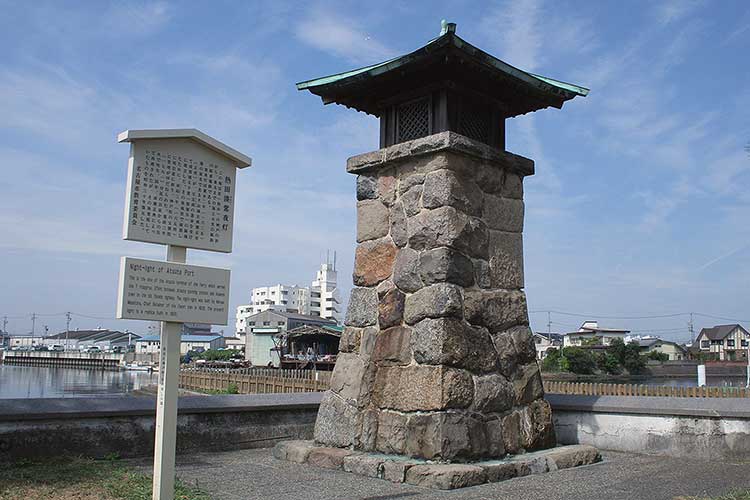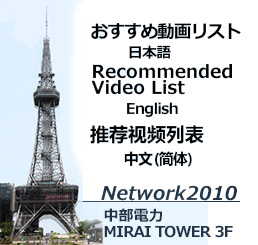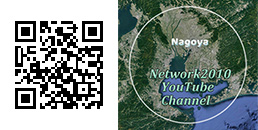- Nagoya in the Edo period(1603-1868)
- ①The Okehazama ancient battlefield
- ②Arimatsu to Miya post‐town
- ③Miya post-town
- ④Atuta Shrine
- ⑤Atsuta~Furuwatari
- ⑥Tachibana-cho
- ⑦Osu Kannon Temple
- ⑧Osu Monzencho
- ⑨Shirakawa Park
- ⑩Nagoya Castle Town 01
- ⑪Nagoya Castle Town 02
- ⑫Toshogu Shrine Festival
- ⑬Horikawa River1
- ⑭Horikawa River2
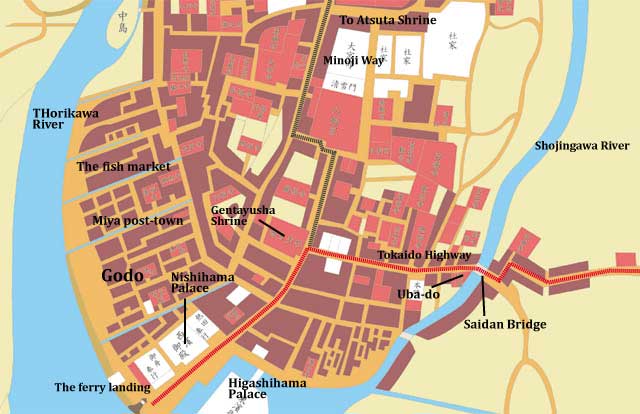
Miya post-town in the Edo period (1603-1868)
Miya Shuku was a posting station which had been the maximum scale in Tokaido( Edo-Kyoto highway in Edo period) . There was the ferry landing,Shichiri-no-watashi which was Tokaido only sea route. Moreover, it had been prospered as a temple town Atsuta Shrine for a long while.
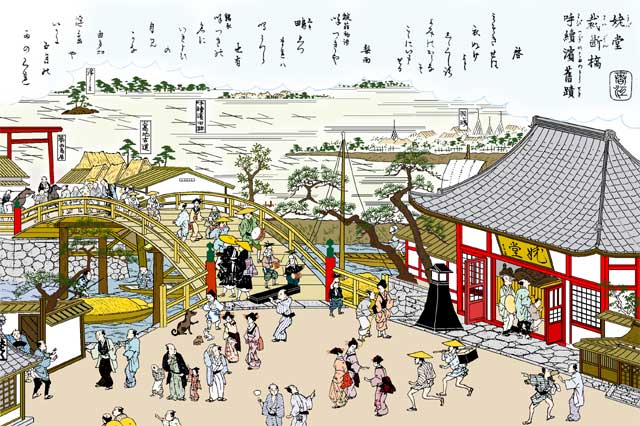
Ubado Temple and Saidanbashi Bridege
Ubado was put on the right bank of Saidanbashi bridge built over Shojigawa river. Once upon a time, the old woman who stole the clothes of the priest drowned on the river died by the curse. Ubad was built by local residents in order to hold a memorial service for the soul of the old woman which continued wandering about.
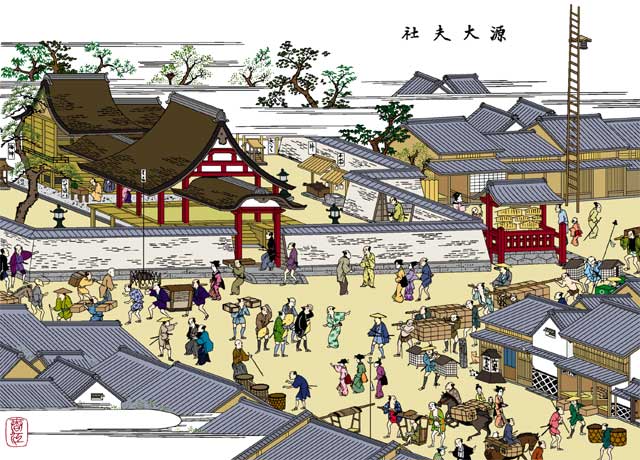
Gentayusha Shrine(Kamichigama Shrine)
Gentayusha Shrine was built in the position where Tokaido Highway and Minoji way branch. This shrine has been worshipped as God which brings about wisdom, and beeb called "Chie(wisdom) no monjusama" It was transferred for a road construction and is enshrined in Atsuta Shrine's precincts now.
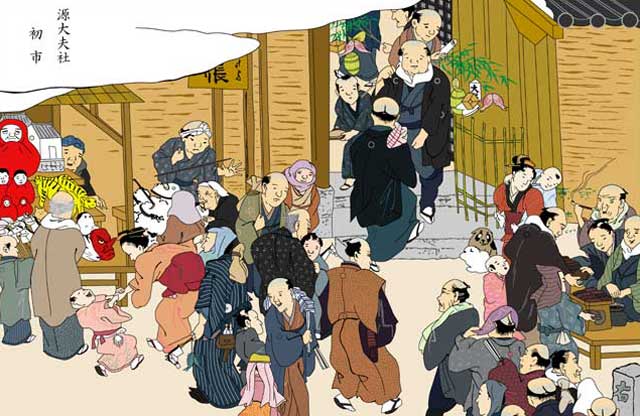
Gentayusha Shrine first market of the year
-
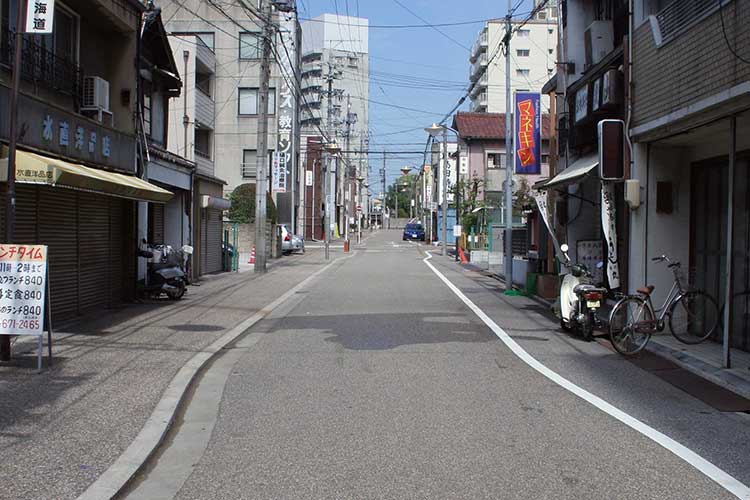
To the forked road
-
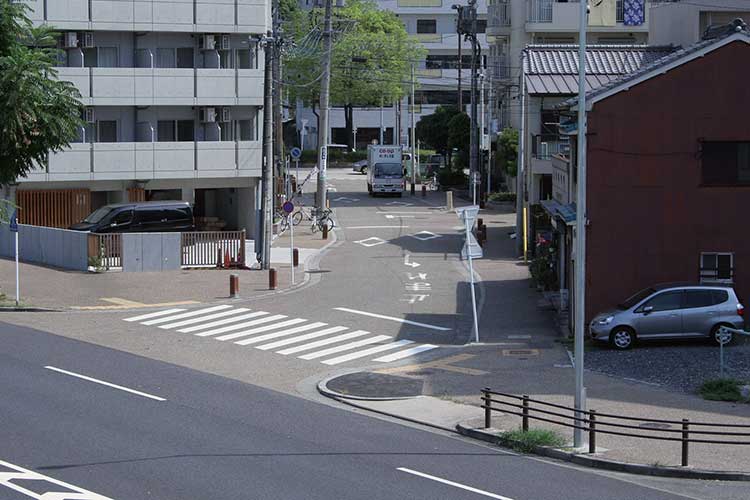
The forked road
-
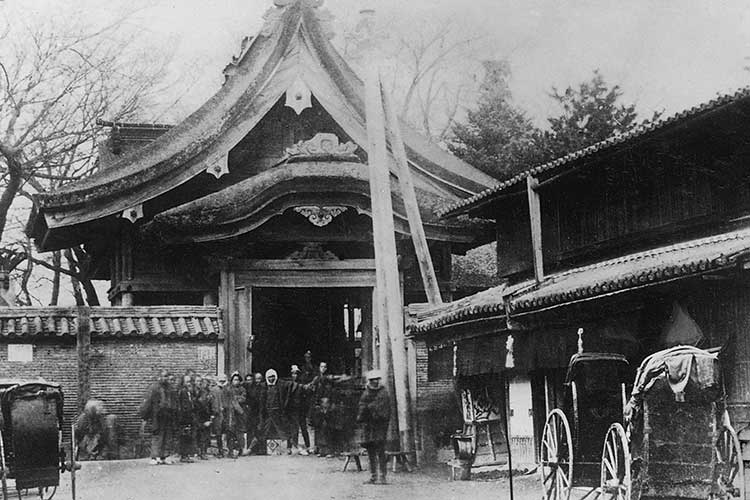
The Kamichigama Shrine before transferring
-
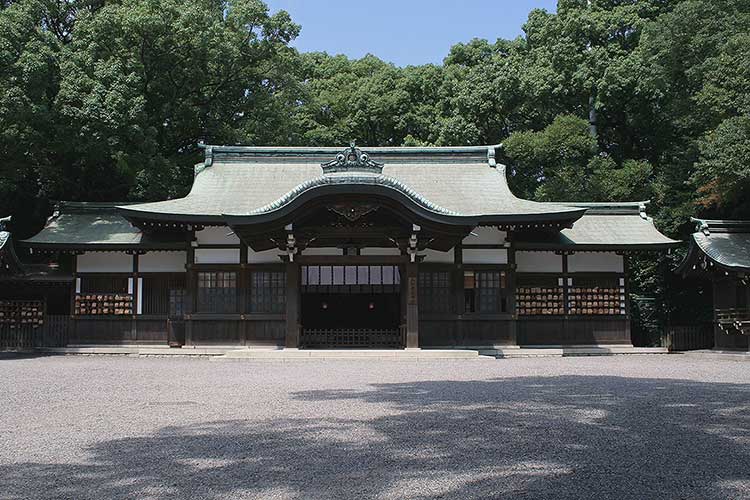
The present Kamichigama Shrine
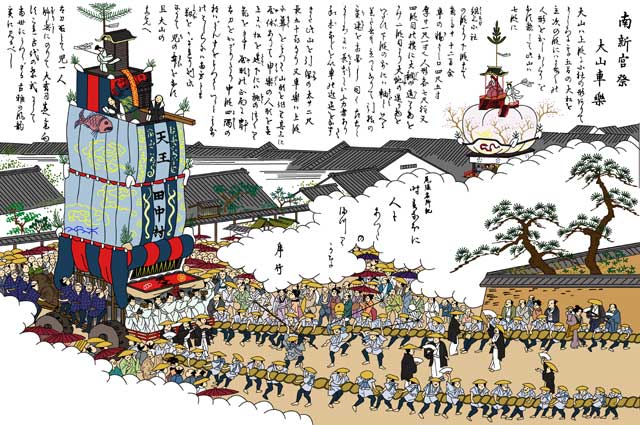
Nangu Shrine festival
The origin of Nangu Shrine festival goes back to the Heian period (794-1185) middle. The epidemic broke out around Atsuta at this time, and in order to pray for this sick recovery, the festival started. In response to the influence of a Gion Festival in Kyoto , Kasahoko type floats came to participate in the middle of the Muromachi period (1338-1573). Then, gradually, the float became high and the float which can also be about 20m in height also appeared in the middle of the Edo period (1603-1868). The march of the float was stopped in Meiji period(1868-1912) , in order to construct an electric wire. The march of the float was stopped in order to avoid the risk of touching an electric wire in Meiji Era (1868-1912).
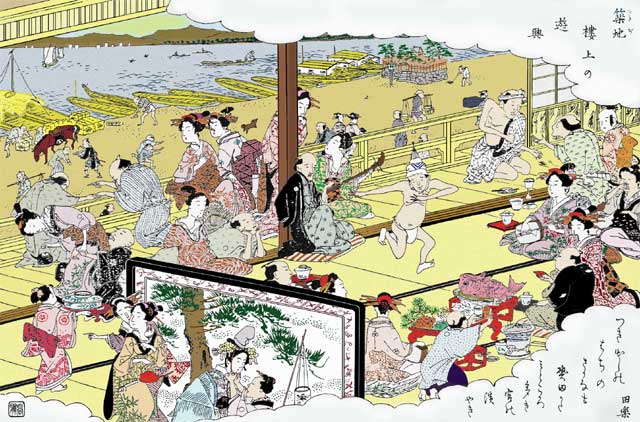
Japanese‐style restaurant near the ferry
In Gode of Atauta shore,Ryokan Japanese‐style hotels against ferry-bound passengers, such as wealthy merchants and samurais of high rank stood in a row. The scenery of Narumi or Hoshizaki was able to be enjoyed from Godo. It prospered especially at the time of enjoying the evening cool of summer, and the time of the moonlight party of autumn. Merchants'load had been piled in heaps at the landing place.
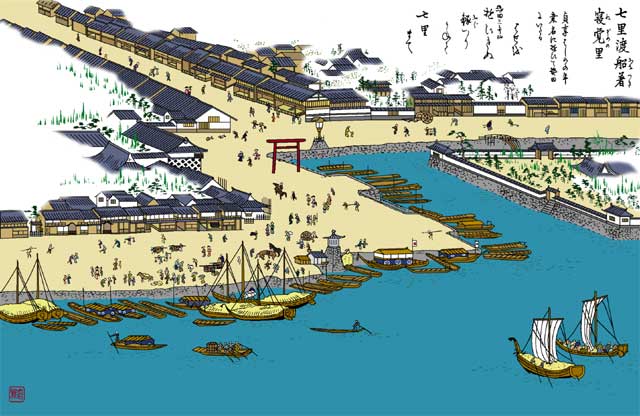
The ferry landing,Shichi-ri-no-watashi
The ferry landing was the start-off point for the only sea-bound section of Tokaido Highway between Miya post‐town and Kuwana post‐town.Miya post‐town was always crowded with ferry-bound passengers and had a leading scale in the highway.
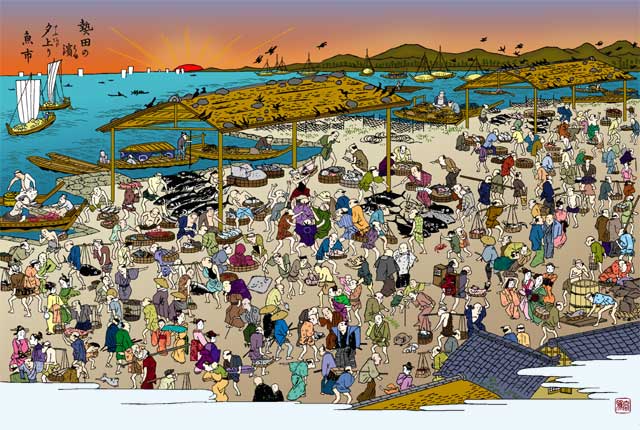
The fish market of the Atsuta beach
An all-day fish market operated on the beach to the the west of Miya post‐town.Many various of fish were brought from across the country to be sold at the market's six wholesalers.

